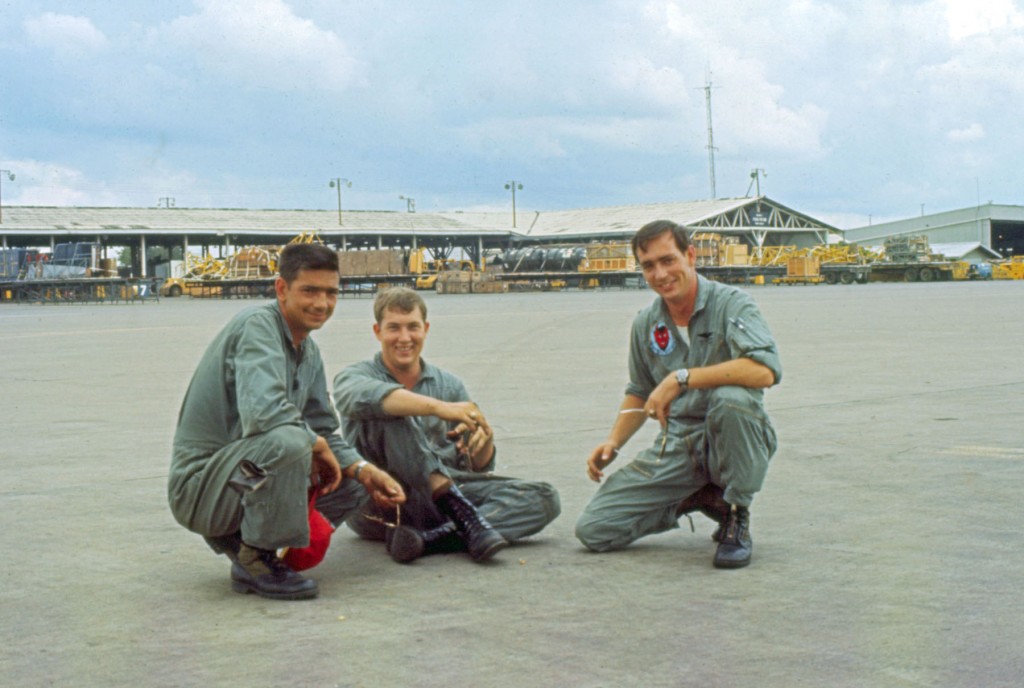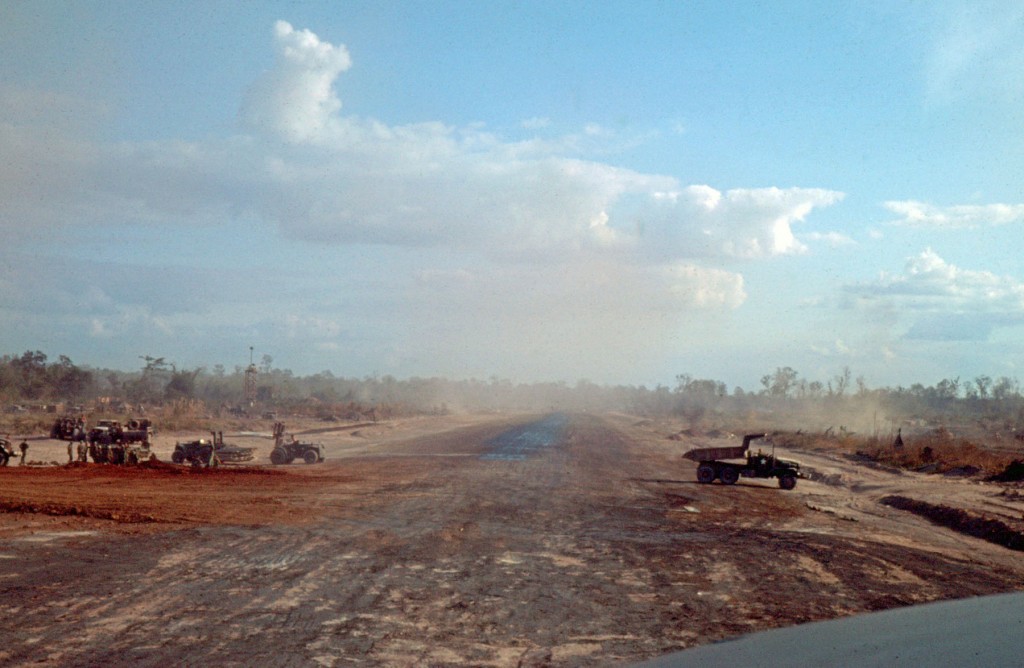Fire in Flight – Page 3.
So we thought our day was going along pretty routinely, we departed Tay Ninh for Phouc Vinh and from there to Tan Son Nhut, the main airport serving Saigon, and, at the time, one of the busiest military bases in the world. It was also the headquarters for the tactical airlift operations in Vietnam. Known as ALCC (pronounced "alcee") it stood for Airlift Comand Control Center, or something like that, but we knew it as "Hilda," their radio call sign. While there, we were briefed on a couple of incidents that had occurred at Katum since the time we had left.
The radio call sign prefix for the C-130E's that day was "Homey," and we were Homey 302. We were told that Homey 303 had blown a tire upon landing at Katum and was disabled. Homey 304 had been circling overhead and taken a 51-caliber round through their cargo compartment. Hilda informed us that they were going to divert us back into Katum to attempt a rescue of Homey 303. I seem to recall that they asked us to volunteer, but that may have been just a courtesy--we were going. We went out on the ramp when Homey 304 arrived to see their damage and get briefed by the crew. There were holes in both the floor and ceiling where the round had gone through the airplane. They had taken their hit a couple of miles north of Katum.

Fig. 3 - Joe Basilisco, Flight Engineer, Jerry Willard, Loadmaster, Jon Alexander, Navigator, on the ramp at Tan Son Nhut air base.
So Hilda changed our itinerary to proceed to Katum with a maintenance team, spare tire and tools to get Homey 303 repaired. Because it was getting hot around Katum, Hilda told us to contact Allen Alpha upon arrival in the area and there would be a fighter escort to accompany us into Katum. We departed Tan Son Nhut at 12:45. About 25 miles south of Katum, we contacted Allen Alpha who basically told us that there was no fighter escort, but be sure and let him know if we take any hits going in. We made a straight-in, steep approach, and maximum-effort landing (slow approach speed, maximum reverse thrust and braking) on runway 34 arriving at 13:15.
We shut down the outboard engines but kept the inboards running in low-speed ground idle while we watched the maintenance guys work on Homey 303. We were also in radio contact with the AC on the crippled airplane, Major Jerry Smith. In the meantime, a 155-millimeter howitzer, 2,000 pounds of flares, and a pallet of barrier nets were loaded onto our aircraft.

Fig. 4 - Katumn Airfield Looking South. This would have been the view out the cockpit as we departed runway 16.
When we got the signal that the tire was on, we started our outboard engines and taxied into position on runway 16. I noticed that it had begun to rain a little as a small cumulus moved overhead. We made a maximum-effort takeoff (rotate at 80 knots with a steep climbout) at 14:05. All was well as we raised the gear, cleared the airport boundary and climbed out over the rain forest below. Flaps remained at the 50% position for the steep climbout. It seemed to me that we were about at the base of the puffy cumulus clouds scattered around the area when we felt what I first thought was just a bump caused by the clouds, but something wasn't right because this had a metallic sound to it. Had we taken a hit? I was making a comment to the crew that it sure felt like a hit, when I heard the loadmaster, Jerry Willard, come up on the intercom with, "Sir, there's a fire back here!"